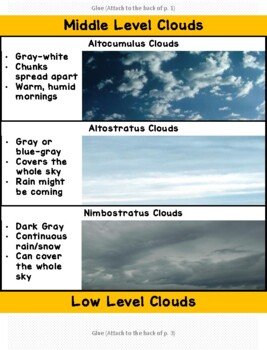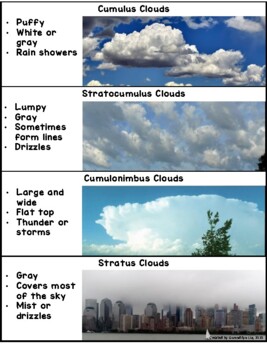Gwen Liu
124 Followers
Grade Levels
PreK - 8th
Subjects
Resource Type
Standards
NGSSK-ESS2-1
NGSS3-ESS2-1
NGSSK-ESS3-2
Formats Included
- PDF
Gwen Liu
124 Followers
Description
Printable poster perfect for aspiring meteorologists!
Print, assemble, and post on near your windows to help students identify (and characterize) the different types of clouds in our sky. I'd recommend printing it out on card stock paper with laminating for extra durability! The full size poster measures about 30" in length, but it can be made smaller by adjusting the printing size on your printer options. Works well as a personal cloud chart when printed 2 pages per sheet, then assembled in the same way.
Total Pages
Answer Key
N/A
Teaching Duration
N/A
Report this resource to TPT
Reported resources will be reviewed by our team. Report this resource to let us know if this resource violates TPT’s content guidelines.
Standards
to see state-specific standards (only available in the US).
NGSSK-ESS2-1
Use and share observations of local weather conditions to describe patterns over time. Examples of qualitative observations could include descriptions of the weather (such as sunny, cloudy, rainy, and warm); examples of quantitative observations could include numbers of sunny, windy, and rainy days in a month. Examples of patterns could include that it is usually cooler in the morning than in the afternoon and the number of sunny days versus cloudy days in different months. Assessment of quantitative observations limited to whole numbers and relative measures such as warmer/cooler.
NGSS3-ESS2-1
Represent data in tables and graphical displays to describe typical weather conditions expected during a particular season. Examples of data could include average temperature, precipitation, and wind direction. Assessment of graphical displays is limited to pictographs and bar graphs. Assessment does not include climate change.
NGSSK-ESS3-2
Ask questions to obtain information about the purpose of weather forecasting to prepare for, and respond to, severe weather. Emphasis is on local forms of severe weather.




